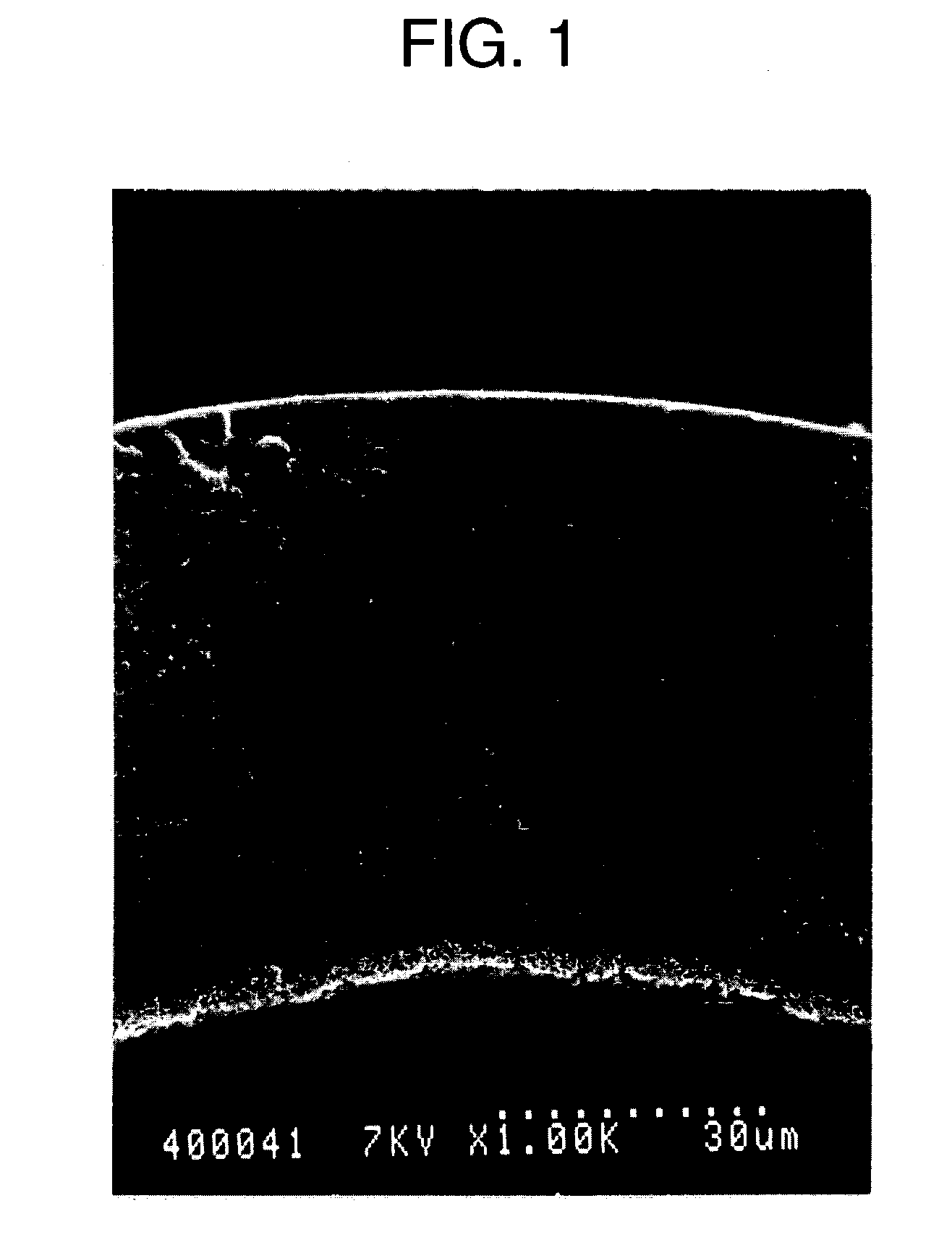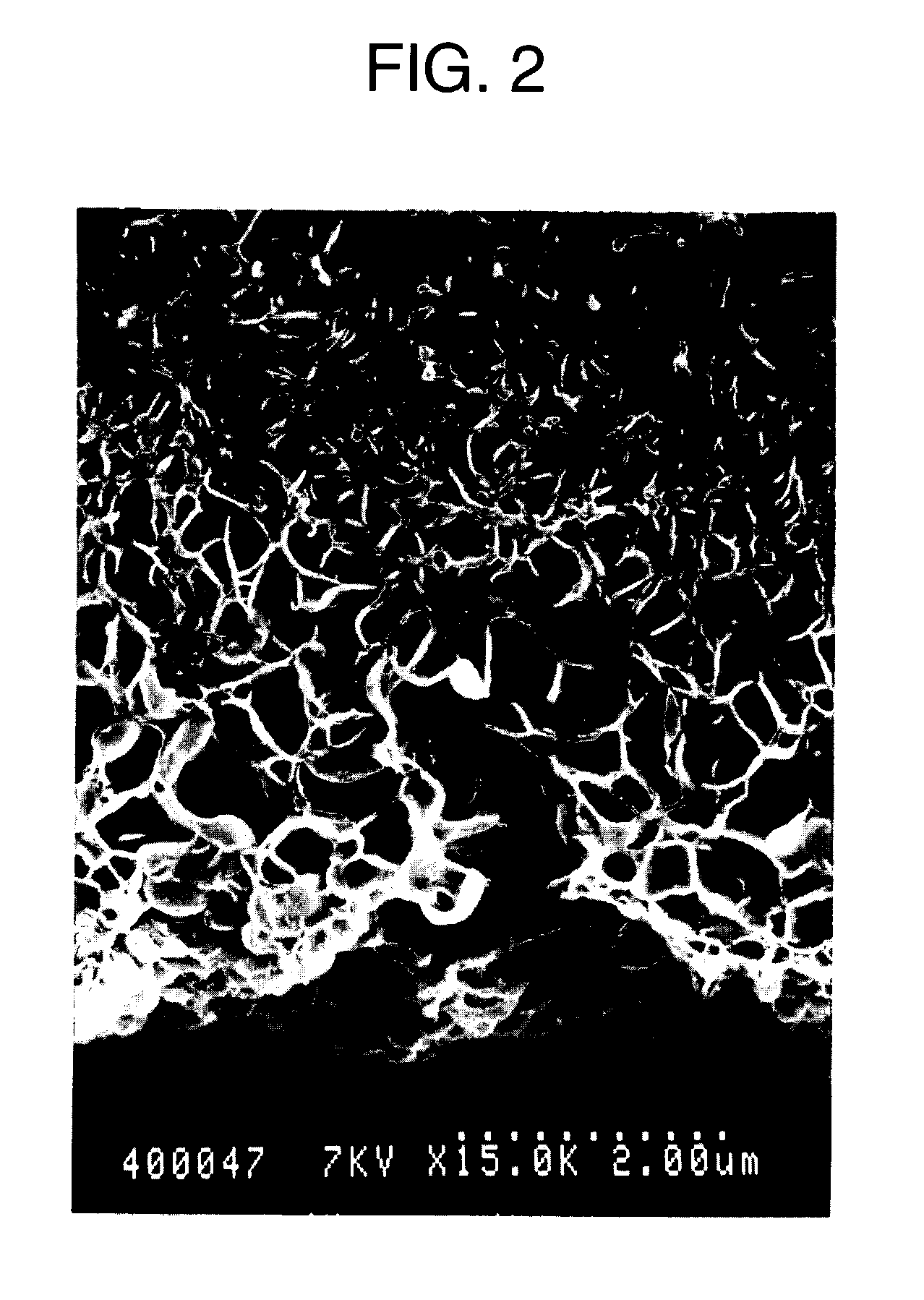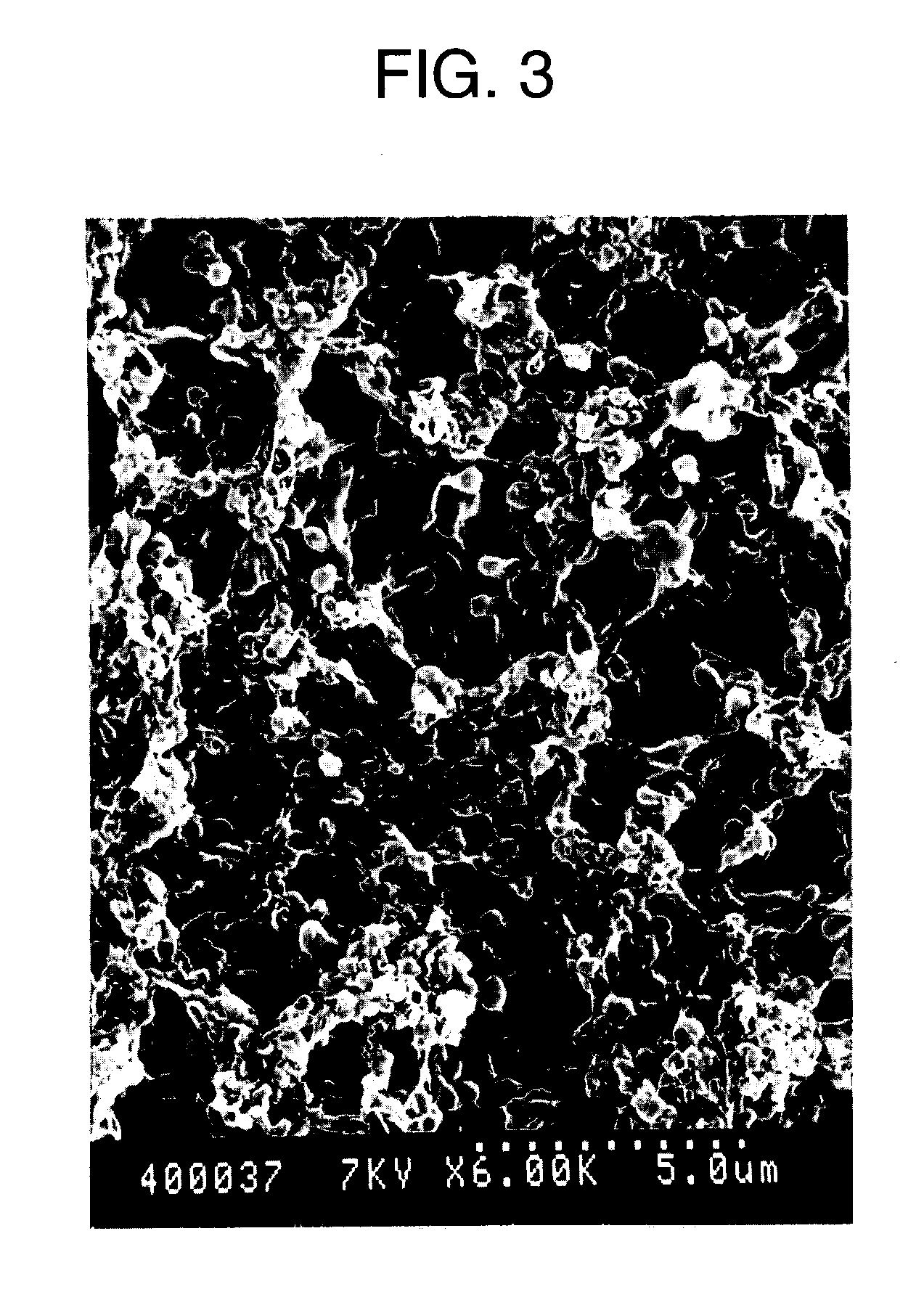Multilayer microporous membrane
a microporous membrane and microporous membrane technology, applied in the field of multi-layer microporous membranes, can solve the problems of inability to remove viruses with a smaller pore diameter, inability to achieve virus removal, and inability to achieve thermally stable viruses. achieve superior permeability, superior permeability, and performance sufficient
- Summary
- Abstract
- Description
- Claims
- Application Information
AI Technical Summary
Benefits of technology
Problems solved by technology
Method used
Image
Examples
example 1
[0115]A composition consisting of 44% by weight of a polyvinylidene fluoride resin (SOFEF1012 made by SOLVAY, crystal melting point of 173° C.) and 56% by weight of dicyclohexyl phthalate (made by Osaka Org. Chem. Ind. Ltd., industrial grade) was mixed under an agitation using a Henschel mixer at 70° C., followed by cooling to obtain a powder-like material, which was charged to a hopper of twin screw extruder (Laboplastmill Model 50C 150 made by Toyo Seiki Seisaku-Syo, Ltd.) and melt mixed at 210° C. to attain a homogeneous dissolution. Subsequently, the composition was extruded in a form of a hollow fiber from a spinneret consisting of a circular orifice with an inner diameter of 0.8 mm and an outer diameter of 1.2 mm at an extrusion rate of 12 m / min, while diheptyl phthalate (made by Sanken Chem. Co., Ltd.) was fed at 130° C. into a hollow part at a rate of 7 ml / min. The extrudate was cooled and solidified in a water bath thermo-controlled at 40° C., and wound up on a hank at a ra...
example 2
[0116]A hollow fiber like microporous membrane was obtained in accordance with Example 1 except that a polyvinylidene fluoride resin and dicyclohexyl phthalate were melt mixed to get a homogeneously dissolved solution, which was extruded in a form of hollow fiber from a spinneret at an extrusion rate of 9.5 m / min (a draft ratio of 6.3 times). A maximum pore diameter of thus obtained microporous membrane was 40 nm, and observation results of a cross-sectional structure of the membrane by a scanning electron microscope showed that a thickness of a coarse structure layer formed adjacent to an inner surface side was 9 μm and a ratio of a fine structure layer to the whole membrane thickness was 82%. Physical properties of this microporous membrane are shown in Table 2.
example 3
[0117]A hollow fiber like microporous membrane was obtained in accordance with Example 1 except that a polyvinylidene fluoride resin and dicyclohexyl phthalate were melt mixed to get a homogeneously dissolved solution, which was extruded in a form of hollow fiber from a spinneret at an extrusion rate of 5.5 m / min (a draft ratio of 10.9 times). A maximum pore diameter of the thus obtained microporous membrane was 39 nm, and observation results of a cross-sectional structure of the membrane by a scanning electron microscope showed that a thickness of a coarse structure layer formed adjacent to an inner surface side was 7 μm and a ratio of a fine structure layer to the whole membrane thickness was 84%. Physical properties of this microporous membrane are shown in Table 2.
PUM
| Property | Measurement | Unit |
|---|---|---|
| Temperature | aaaaa | aaaaa |
| Fraction | aaaaa | aaaaa |
| Pore size | aaaaa | aaaaa |
Abstract
Description
Claims
Application Information
 Login to View More
Login to View More - R&D
- Intellectual Property
- Life Sciences
- Materials
- Tech Scout
- Unparalleled Data Quality
- Higher Quality Content
- 60% Fewer Hallucinations
Browse by: Latest US Patents, China's latest patents, Technical Efficacy Thesaurus, Application Domain, Technology Topic, Popular Technical Reports.
© 2025 PatSnap. All rights reserved.Legal|Privacy policy|Modern Slavery Act Transparency Statement|Sitemap|About US| Contact US: help@patsnap.com



